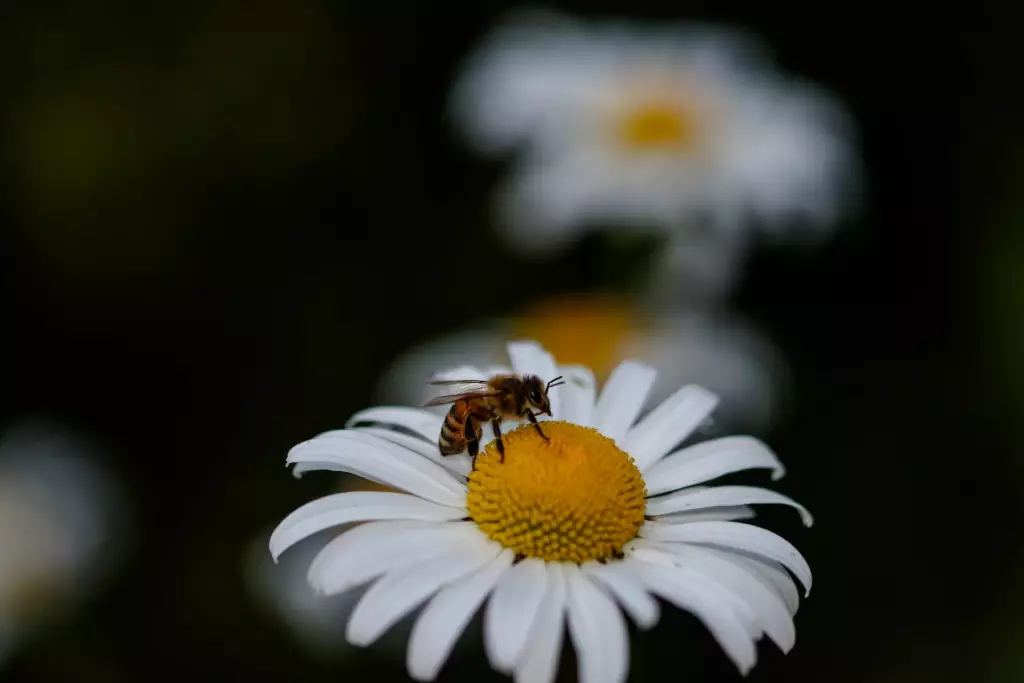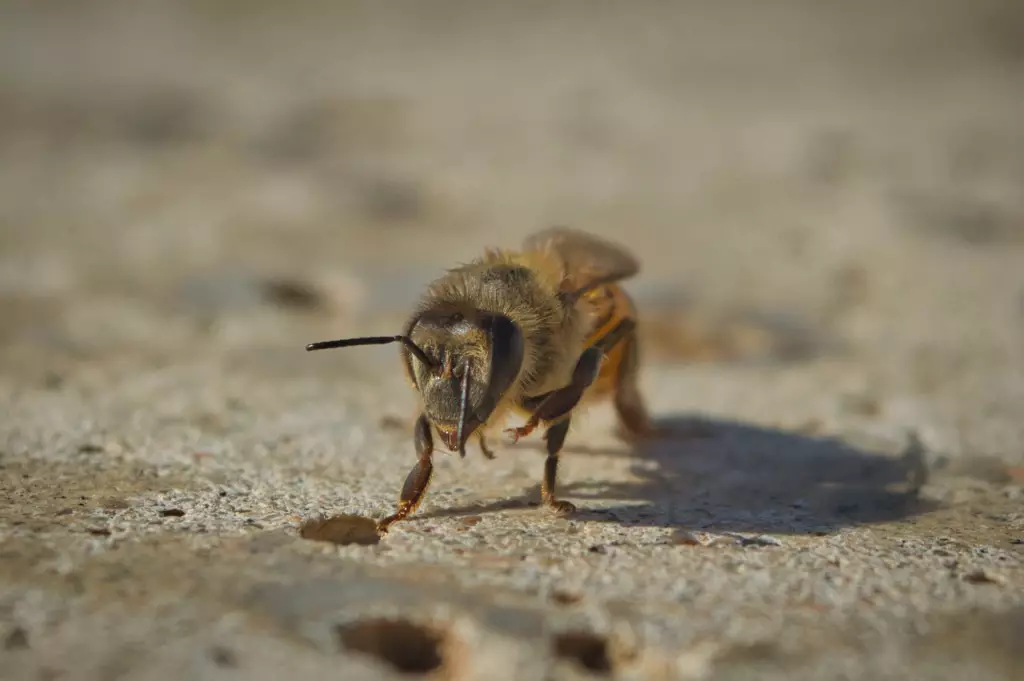This Is How To Tell If a Bee is Dying or Just Tired
Death and fatigue is a part of life, but that doesn't take the sting out of finding tired or dead bees. Here's how you can tell the difference & save the bees.
Tired bees will still be struggling to crawl where you found them. Dying bees are often clinging to flowers, with markedly darker bodies and ragged wings. If their tongue is hanging out, they've been poisoned.
Tired bees are more commonly sighted in the cities, where there are usually fewer nectar sources to sustain their trip back to the hive. They may be struggling to crawl on the sides of paths or parks, especially during the autumnal season. Here's how you can help them regain their energy and return to the hive.
Summary
- Tired bees can be found crawling on the ground or lying in the grass or pavement. Dying bees have darker bodies and ragged wings, often found clinging to flowers before they pass on and drop off.
- Be careful - you may confuse tired bees for queen bees, who are frequently grounded, or those who are simply at rest.
- If you want to help a tired bee, find out what's causing their exhaustion. Are they weighed down because they're drenched, or suffering from a severe parasite infestation? This will help inform your efforts.
- In case of colony-wide bee deaths, check for signs of pesticide poisoning, mite infestation, or intruders.

On this page:
How to Tell if a Bee is Tired or Dead
A honeybee has run out of energy if it moves slowly, seems lethargic, and was found lying in the grass or pavement, especially under poor weather conditions. If they do not seem injured or wet, then this a sign that they may need your intervention. However, tired bees are commonly confused with those at rest. You may even be looking at a queen bee, who frequently gets mistaken for being tired because they do not spend as much time in the air.
You may also be looking at a male drone bee. Drones rest late at night or early in the morning on flowers, and they'll have a thin sheen of dew. At first glance, they may look alarming because they've fallen sideways or their heads are down. However, they'll wake up once warmed by the sun.
Queen bees may also isolate themselves when they have finished mating or are ready to hibernate. Do not disturb her unless she is directly in danger. If she is, gently relocate her to a nectar-rich flower or somewhere with plenty of leafy cover.
You can bring bees inside your home, but find a container with air holes so they don't get lost or start head-butting the light bulbs. Make sure you keep them somewhere warm and far from pets or children, and then release them outside once they start feeling better.
Hives usually experience more casualties during the winter. This phenomenon is known as "winter mortality." Honeybees can also fall victim to inclement weather when they're out on "cleansing flights." They leave the hive for a quick bathroom break (honeybees don't defecate inside the hive!) and then get caught by a snowstorm or heavy rainfall on the way back.

Reasons Why a Bee is Tired
They're infested with parasites
Parasites, particularly varroa mites, are a serious issue among honeybees. If left to grow unchecked, they could kill entire colonies. While parasites have been a part of bees' lives for thousands of years, a severe infestation can affect a bee's capacity to forage. They may struggle to move and even seem a little drunk.
Normally, honeybees wouldn't flinch at having to carry a few extra passengers. After all, they're designed to carry pollen and nectar across long distances. But if a bee on the ground looks filled with parasites, you can try gently brushing some off with a small paintbrush.
They've fed on lime trees
If you live in an area with plenty of lime trees, try setting up your apiary elsewhere or reconsider beekeeping altogether. Occasionally, crowds of dead honeybees can be found under lime trees. While research into this phenomenon is still ongoing, studies suggest that caffeine is present in its nectar. This, in itself, is not toxic to bees, but it may affect their judgment by leading them to overvalue a caffeinated food source. As a result, they may continue to pursue nectar from lime trees even if it is not the best source in the area, or if it is completely depleted.
They got into car accidents
If a crowd of honeybees and other flying insects lie scattered along busy roads or bridges over similar areas, they may have been injured or killed because they flew directly into the path of a speeding vehicle. This happens to billions of insects around the world. One way to avoid road accidents is to plant road verges, which are long strips of grass, plants, and trees between a sidewalk and the road.
They've been poisoned by pesticides
Unfortunately, chemical pesticides harm hardworking honeybees as much as they do pests. If you suspect a honeybee is poisoned, take a closer look to see whether its tongue is hanging out.
Death by poisoning is rare for bees. If you suspect that something in your area is poisoning your little workers, then get in touch with your local Beekeeper's Association or ask for the help of an expert beekeeper immediately. While you can attempt to resuscitate it, there is not much that can be done at this point.

How to Revive a Tired Bee
Check for symptoms and survey the area
Tired bees will be laying or crawling with difficulty in areas that are far from sources of nectar.
Sometimes, bees can become wet or cold. Wet bees will have difficulty using their wings to lift off, so they'll stay grounded until they've dried off completely.
An interesting study found that when bees accidentally land in water, they stay alive by using their wings to generate small ripples across the water, creating enough sway to move them along until they reach the water's edge. So if they're drenched and fatigued after their unfortunate landing, pick them up gently and place them in the sun to help them dry off and get warmed.
Protect yourself while relocating the bee
If a nameless, faceless giant suddenly took you away, you would be nervous too. Use a piece of paper, a nearby leaf, or even your sleeve to gently pick up the bee and relocate her to a better area. This would include flowers like knapweeds, sunflowers, or buddleia, which are plenty of the nutrients needed to reinvigorate the bee.
Once she is safely perched on a flower, give her a few minutes to try and collect some nectar for herself.
Feed the bee with sugar syrup
If the bee isn't taking to the flower or you don't have good nectar sources nearby, then you can conduct supplementary feeding. Mix together two tablespoons of granulated white sugar to one tablespoon of water and use a dropper to deposit a tiny bit near the bee.
Note that this should only be done as a last result. While sugar water isn't bad, it can never replace the nutrition offered by nectar and pollen from native flora.
More Signs a Honeybee Has Been Poisoned
Sadly, the most humane thing we can do for dying honeybees is to leave them be. If they are suffering, then prolonging their life will not alleviate their pain.
One thing you can do, as a beekeeper, is to find out whether your honeybees died as a result of hive poisoning. Ideally, your inspections as a beekeeper should be enough to pre-emptively detect the signs of pesticide poisoning, severe infestation, or impending colony collapse. Pesticide drift can wipe out an entire colony and even make the hive unusable for future colonies.
Aside from their tongue hanging out, other symptoms of poisoning include a lack of foraging bees leaving the hive, aggressive behavior from remaining bees, and plenty of dead bees outside the hive entrance. The wings of dead adult bees may be unhooked and angled oddly away from their body, and the hind legs stretched out behind them.
In case of a poisoning. move the hives to a safe area and remove any excess supers. This will help the colony stay warm.
